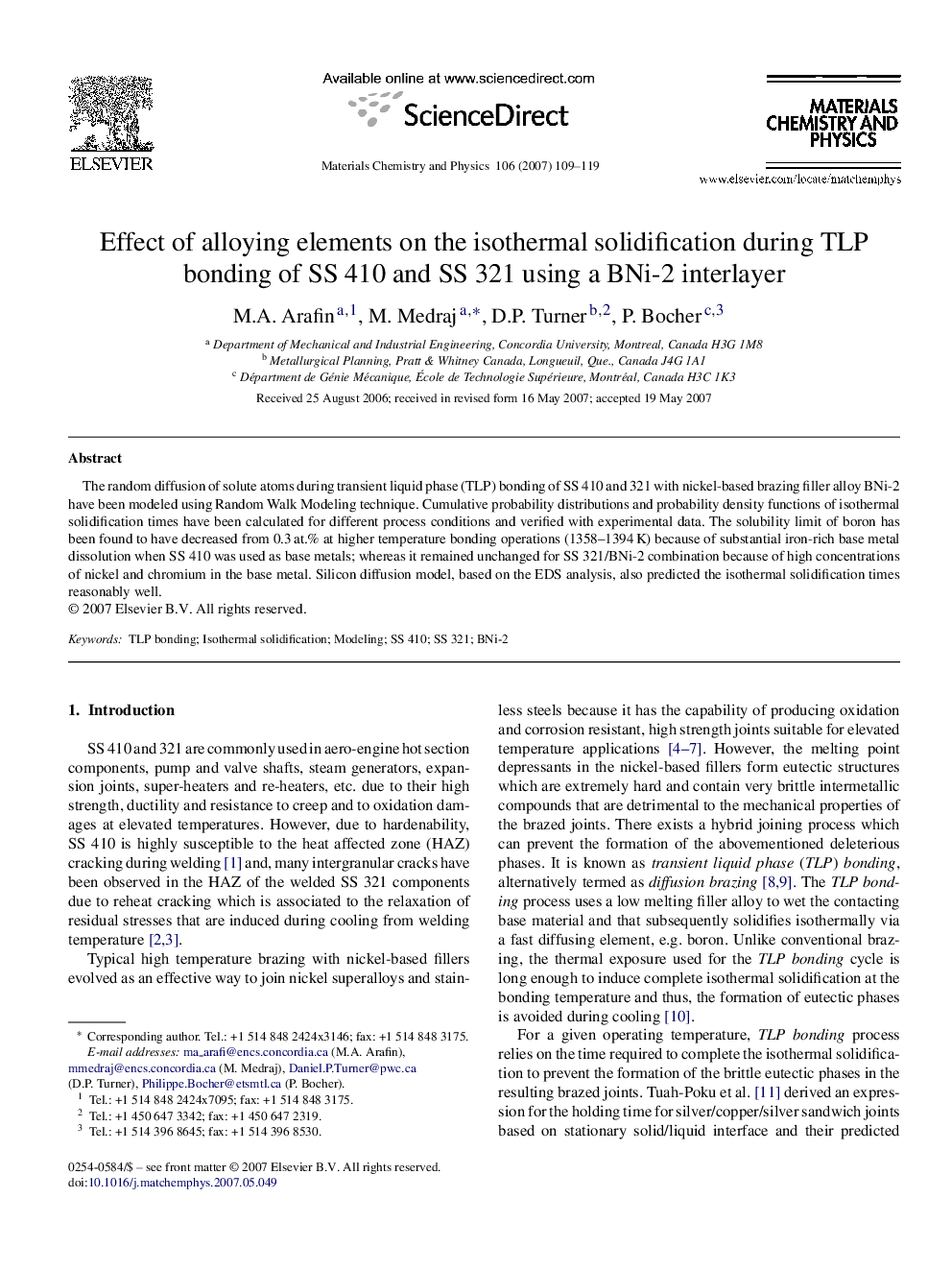| Article ID | Journal | Published Year | Pages | File Type |
|---|---|---|---|---|
| 1527074 | Materials Chemistry and Physics | 2007 | 11 Pages |
The random diffusion of solute atoms during transient liquid phase (TLP) bonding of SS 410 and 321 with nickel-based brazing filler alloy BNi-2 have been modeled using Random Walk Modeling technique. Cumulative probability distributions and probability density functions of isothermal solidification times have been calculated for different process conditions and verified with experimental data. The solubility limit of boron has been found to have decreased from 0.3 at.% at higher temperature bonding operations (1358–1394 K) because of substantial iron-rich base metal dissolution when SS 410 was used as base metals; whereas it remained unchanged for SS 321/BNi-2 combination because of high concentrations of nickel and chromium in the base metal. Silicon diffusion model, based on the EDS analysis, also predicted the isothermal solidification times reasonably well.
